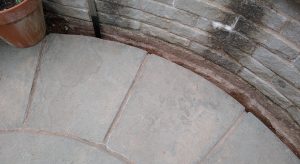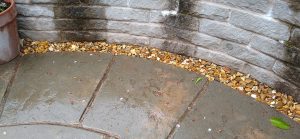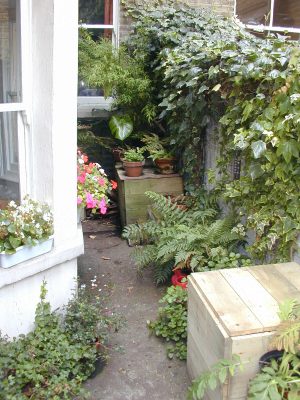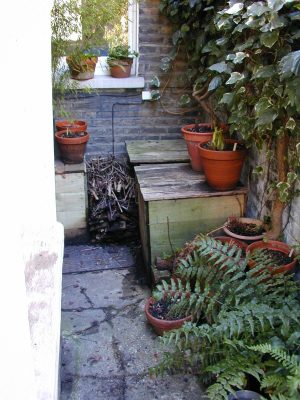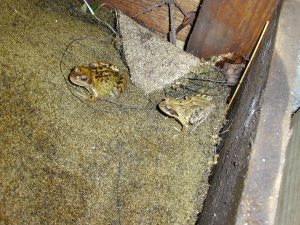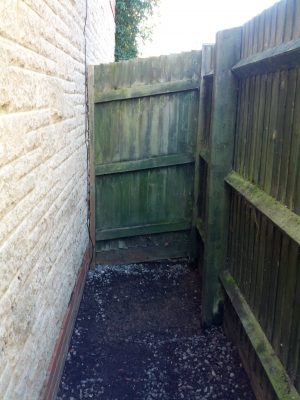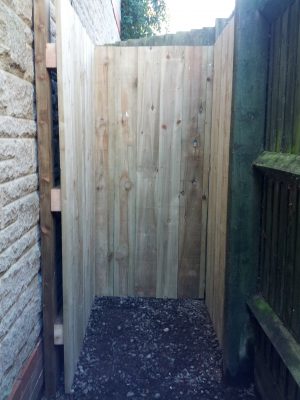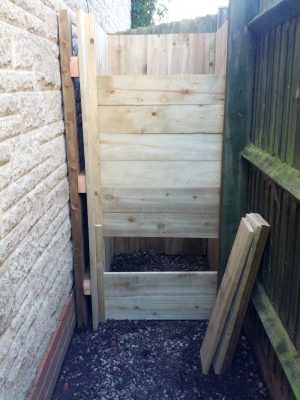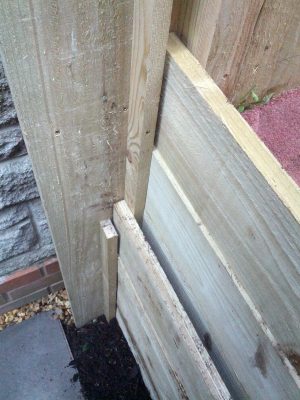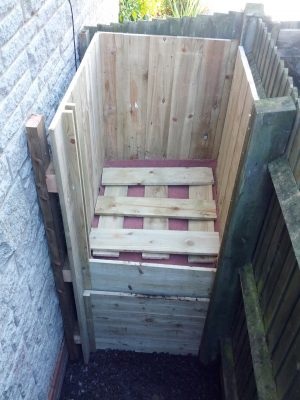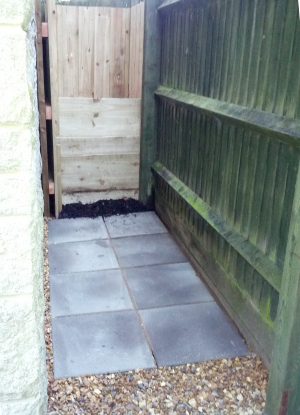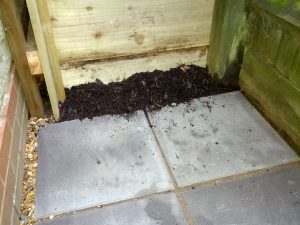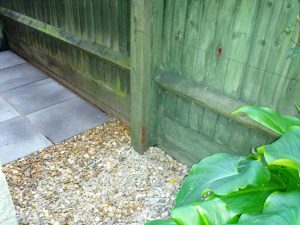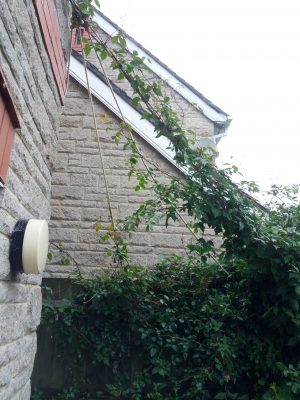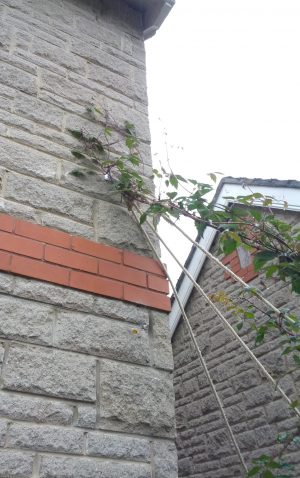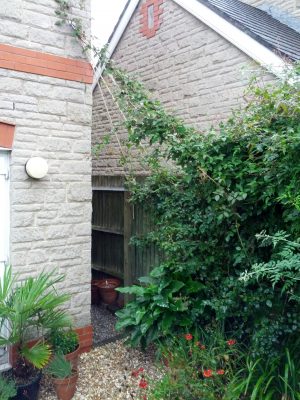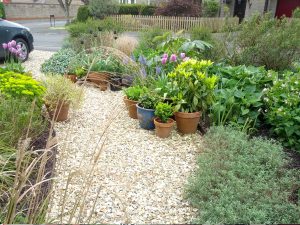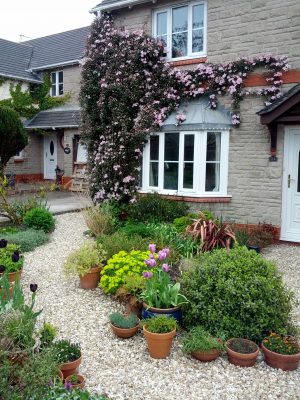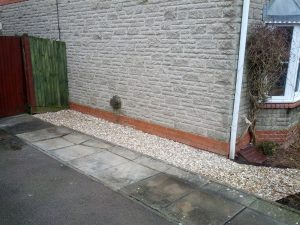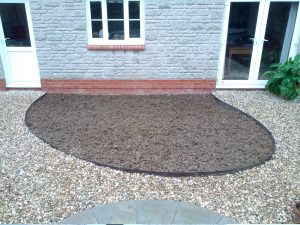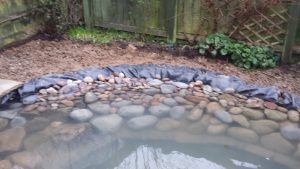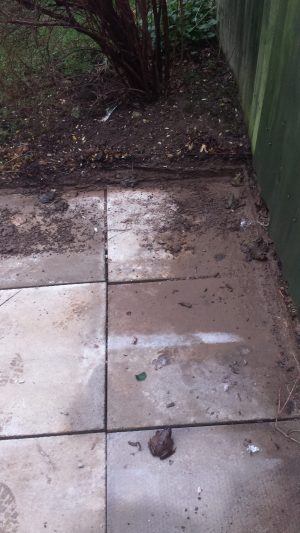I’ve often thought about planting something in this gap. Mind-your-own-business, chamomile, succulents or sweet woodruff. As a first step I cleared out the gravel in the narrow section to a depth of 100cm or so when it was dry, cleaned it and topped it up with fresh golden gravel. The drainage is probably still not brilliant.
Posts in category: Construction
Compost
Previous garden
I had five 2′ x 2′ x 2′ bins, a total of 40 cu ft = 1,130 litres. They worked well, and didn’t really take up any space because I could put pots on them. They were made of treated sawn softwood, and lasted about 15 years. Getting rotted compost out was slightly inconvenient, but made easier because they were on concrete. This is not recommended by the experts, but it never gave me any trouble. I never bothered to turn the compost, just returning anything that hadn’t rotted to the newest bin as I was extracting compost.
New garden
I started with one large and one smaller Dalek-style plastic compost bins in this 1 meter wide gap between the N wall of the house and the boundary fence. They were difficult to use, and not really of sufficient volume. They were both full when I transferred their contents to bags before taking this picture.
I lined the end of the gap with treated boards and added battens so loose boards can be inserted to enclose the open side. Four boards at the front allow compost to be removed from the bottom of the heap without disturbing the boards behind which allow fresh green waste to be added to a height of about 2 meters. There’s a stop to keep the rear stack at the height shown. After returning all the compost from the bags the bin is slightly less than half full, so I’ve more than doubled capacity in less space, and the bin should be much easier to use. Dimensions are .8 x .87 x 1.73 m, so capacity is 1.2 cu m = 1,200 litres. Also the compost should stay warmer and rot better because it’s all in one volume.
There’s nearly 2 meters of paving which will allow compost to be got out without making a mess on the gravel. There will also be much more space for resting pots etc.
Rope ladders
10mm synthetic hemp rope is stretched between the NE corner of the house and the fence along the N side of the back garden to allow Clematis montana and Rosa ‘Albertine’ to reach the house. Simpler and less obtrusive than a pergola. They shouldn’t be visible in a year or two
Some paths are too wide
This path is really rather too wide. The pots help, and I’ll try to plant some more overlapping edging this summer. If that fails I’ll enlarge the beds by making a new border, probably with rows of bricks. The metal edging would be hard to move, even though I’ve got some spare pieces, but it shouldn’t be difficult to get out.
Beds before planting
These are the beds after the contractors had finished. The bare soil had about 6″ of composted municipal green waste applied before planting.
On the gravel bed the chippings were scraped back and planting done through holes cut in the membrane underneath.
Pond during construction
Taken by Pete Ryell.
Frogs found under old shed
Photo by Pete Ryell.
